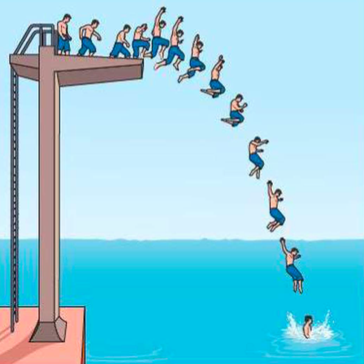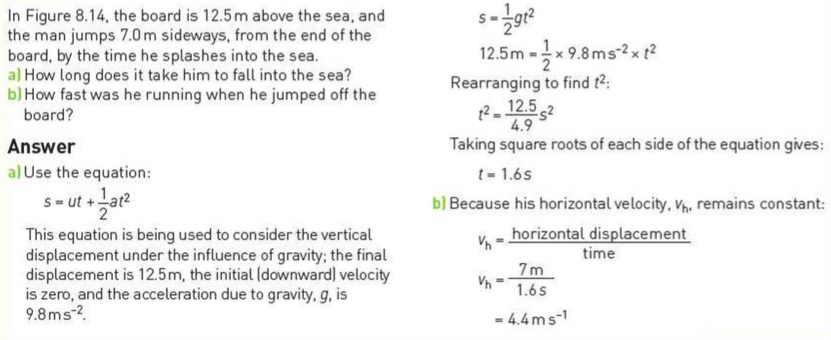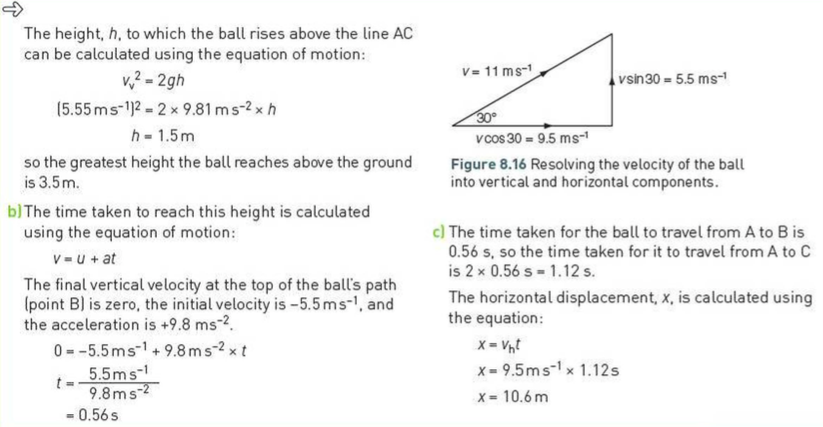Projectile Motion
Summary
⇒ Projectile motion builds on the principles we have already learnt:
- Newton's first law of motion: an object will continue to move in a straight line with a constant speed (or remain at rest) unless acted on by an unbalanced force
- Newton's second law of motion: an object accelerates in the direction of a resultant force acting on it (resultant force = mass x acceleration)
- Projectile paths may be predicted using the equations of motion
- A vector velocity may be resolved into horizontal and vertical components
Falling Sideways

⇒ This shows a diver jumping into the sea, and each 0.2 seconds another image is taken
⇒ The diver is displaced sideways by a constant amount in each frame of the image because there is no horizontal force acting on him, so he can keep moving with a constant speed in that direction
⇒ However, his displacement downwards does increase with each frame because gravity acts to accelerate him - so downward velocity increases
⇒ An important principle is that the vertical and horizontal motions of the diver are independent of each other
- Thus, when the diver jumps horizontally off the board he will always reach the water at the same time
- But, if he runs faster sideways he can travel further from the board
⇒ In the following calculations we will ignore the effect of air resistance (although when things move very quickly, such as a golf ball, air resistance needs to be taken into account)
Example

Example 2


Extra
⇒ Also see our notes on: